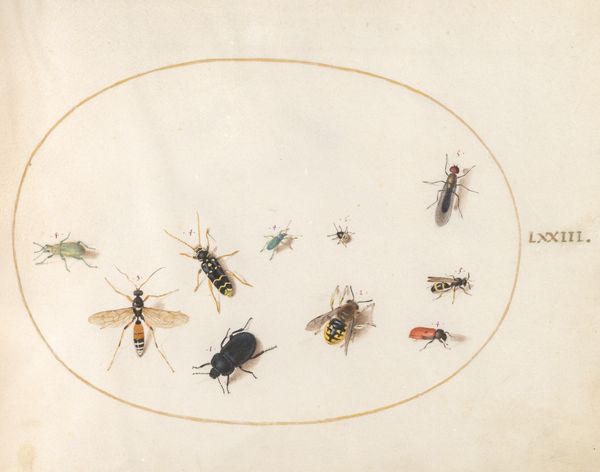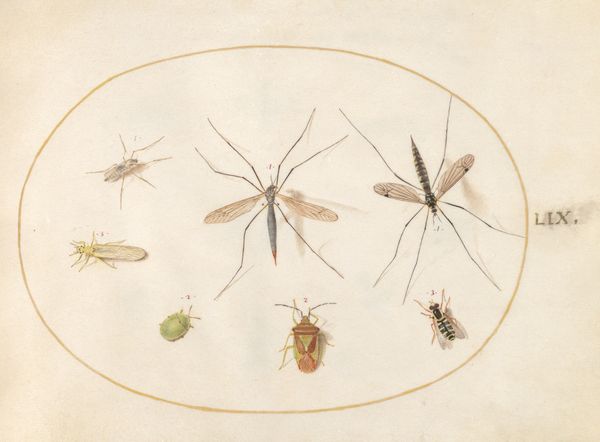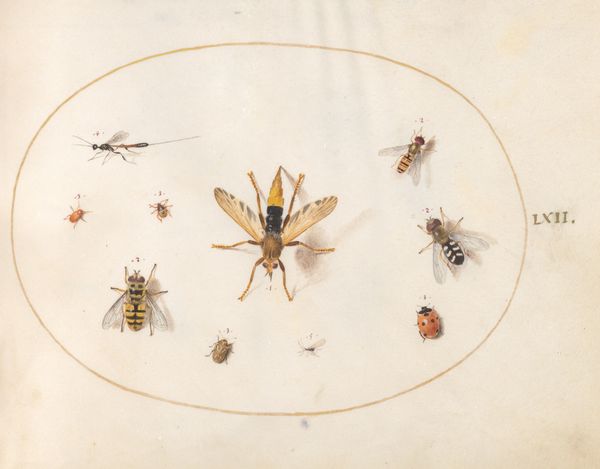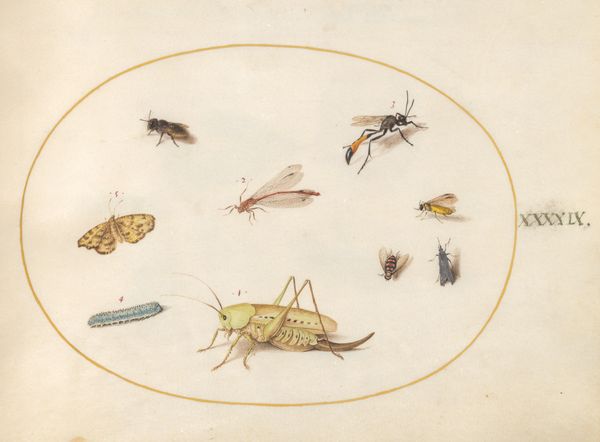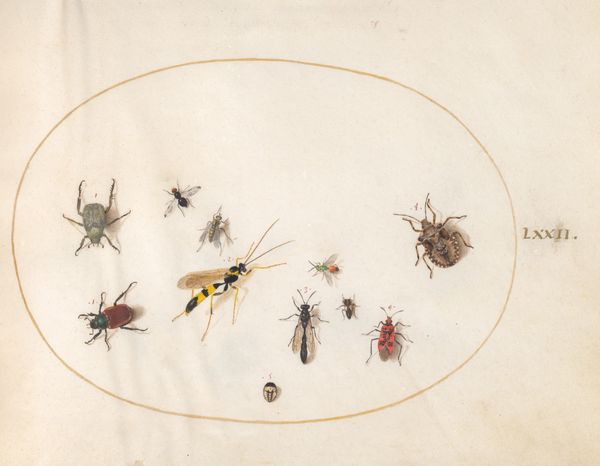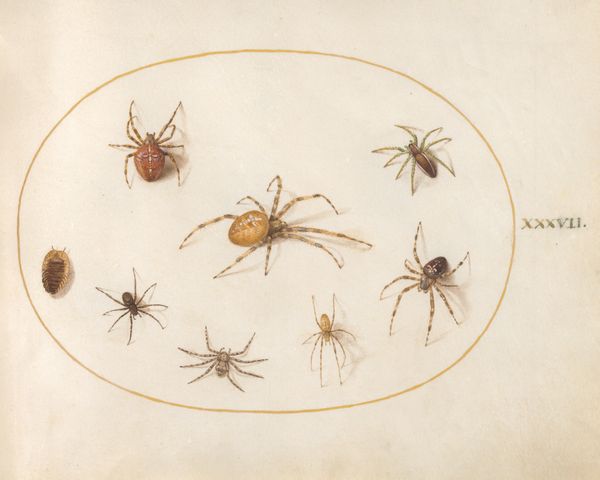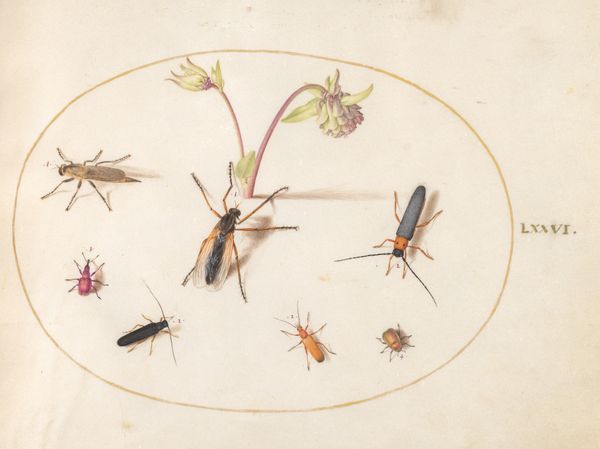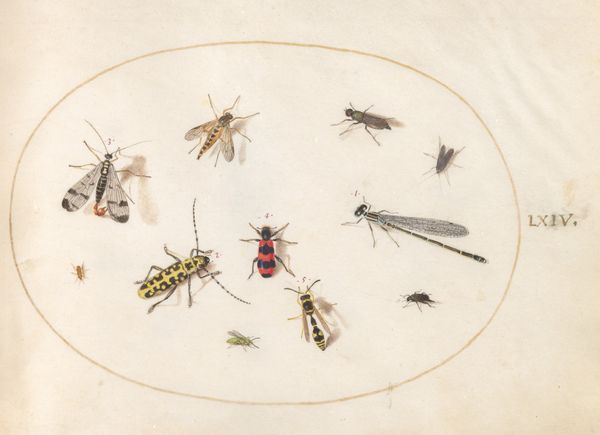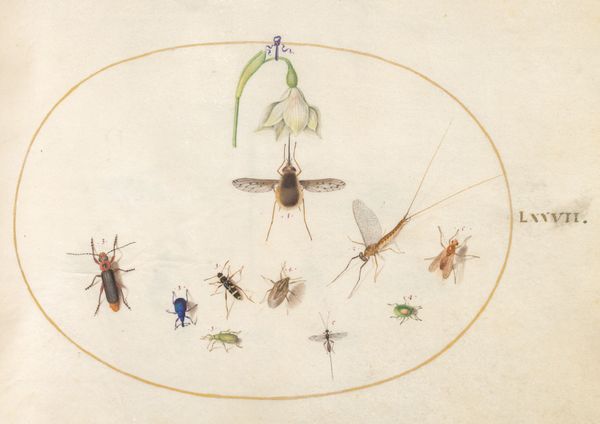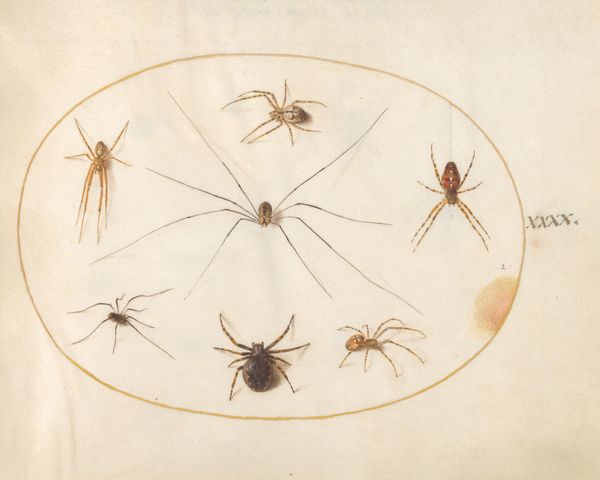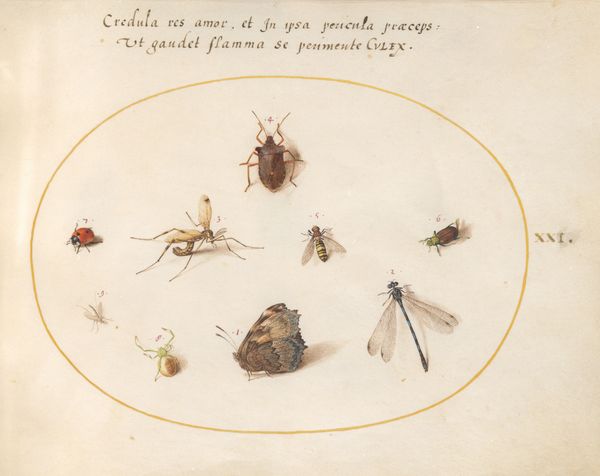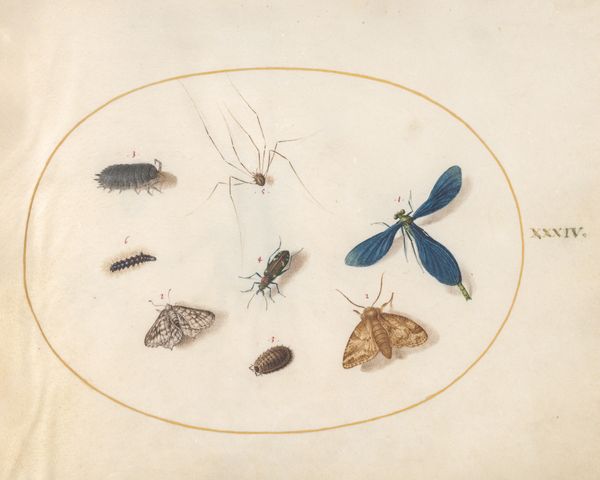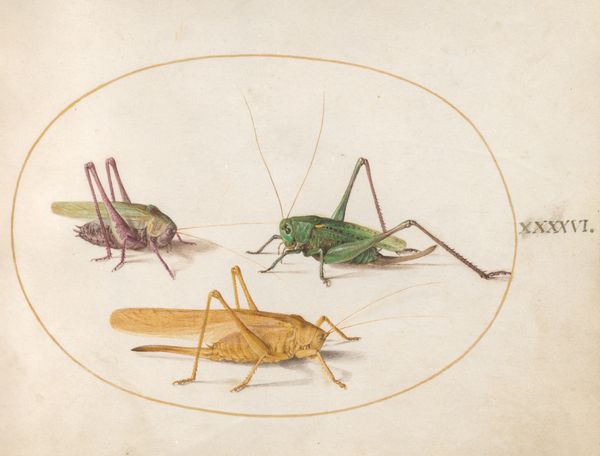
Plate 79: Twelve Insects, Including Shield Bugs c. 1575 - 1580
0:00
0:00
drawing, coloured-pencil, watercolor
#
drawing
#
coloured-pencil
#
water colours
#
11_renaissance
#
watercolor
#
stoneware
#
coloured pencil
Dimensions: page size (approximate): 14.3 x 18.4 cm (5 5/8 x 7 1/4 in.)
Copyright: National Gallery of Art: CC0 1.0
Editor: We're looking at Joris Hoefnagel's "Plate 79: Twelve Insects, Including Shield Bugs," created around 1575-1580. It appears to be rendered in watercolor and colored pencil. The composition, contained within an oval, gives it the feel of a specimen display. What’s striking is the hyper-realistic detail of the insects. What historical narratives are present in this piece? Curator: What immediately strikes me is how this work functions within the history of scientific illustration and the burgeoning field of natural history in the late 16th century. This wasn't simply about documenting, but also about demonstrating a new mode of observing and classifying the natural world, driven by the political and economic interests of the time. Consider the context: exploration, trade, and colonization fueled a desire to understand and control the world's resources. Editor: So the detailed depictions serve more than just artistic purposes? Curator: Precisely. Think about the patronage of such works. Who would commission these elaborate insect studies? Likely wealthy merchants, scholars, or even royal courts. The plates functioned almost like encyclopedias, showing not only artistic skills but a controlled representation of nature meant to convey status and power. Hoefnagel isn't just showing us bugs; he is presenting a vision of the world organized according to human perception. The scientific method beginning to take root in Europe changed art's goals and audience. Do you notice anything else about the imagery? Editor: I see how each insect is meticulously depicted, yet separated from its natural habitat, giving it a rather sterile and academic appearance. The political dimensions you mention are interesting given the date; I’ll have to look further into the relationship between art and nascent scientific methods. Curator: Yes, considering Hoefnagel's role in the broader history of scientific visual culture really opens up interesting avenues for exploration.
Comments
No comments
Be the first to comment and join the conversation on the ultimate creative platform.
